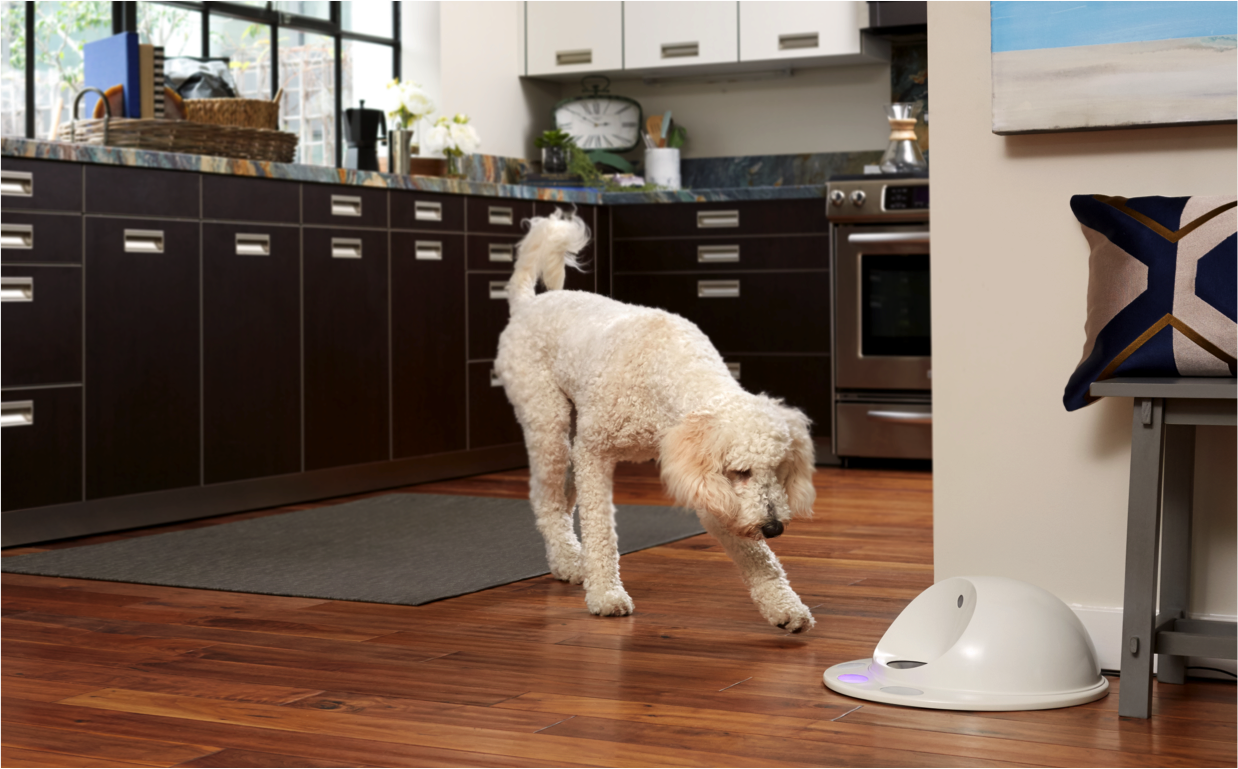
It seems everything is going digital or high tech these days, even our dog toys! However, are these toys really a good training or play tool for your dog? Or do they encourage bad habits?
We looked at several of the hottest devices on the market (or soon to be) and have thier pros and cons from expert dog trainers.
Pros to “Self Play”
“I think the tech toys and training devices can be great tools to help give a dog an energy outlet,” Robin Bennett, CPDT-KA author, All About Dog Daycare, co-author, Off Leash Dog Play and co-author, Knowing Dogs Staff Training. “Dogs are amazingly smart and some of those devices can be really good for them to use their brains.”
It is definitely good to have toys to keep your dog from being bored while you are out. You want their mind stimulated and something appropriate to do other than chew your shoes or electrical cords.
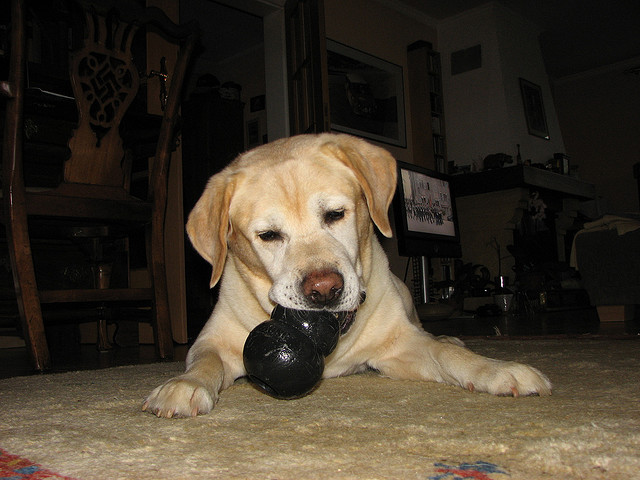
If your dog has separation anxiety, having something interesting that engages them can really help with overcoming their anxiety every time you leave the house.
For crate training, giving your dog something fun to do in the crate creates a positive association.
These are times when “self-play” can really be helpful and even effective at training.
Cons to Self-Play
However, there is a downside to this. Most of these toys hope to attract buyers by advertising that they will keep your dog occupied while you are away (at work, at a party, on a trip), or when you “just don’t have time.”
“While I don’t think this happen in most cases because humans are so hardwired to be with their dogs, I do sometimes worry that the technology will replace human interaction,” says Bennett “We see this in humans all the time (a family goes to dinner together and everyone is on their iPhone!). I would hate for the interaction with a tech device to overshadow human training, touch and play. So basically, this is the same fear I have with humans and technology!”
So if you are home, make sure you are taking the time to play with your dog too, and don’t just set him in front of the auto feeder, like a child and their smartphone.
The other potential issue is destructive behavior.
“My only hesitation with the toys that deliver treats when the owner is away is whether or not the dog will obsessively lick, paw at, or chew the toy,” says Bennett. “I think if the construction is good and the dog isn’t able to get to the food, they will eventually give up and the treat dispense will be used as designed. But I think it is possible that some dogs will continue to work at trying to get the treats out of the toy and possibly destroy it (or part of the home where the treat dispenser is set up). I think this can be monitored and is likely only a risk with a small number of dogs.”
I ran into this with my young sheltie and the Manners Minder (discussed below). As soon as he realized it had treats in it, he tried to just bust open the device, rather than think about what behavior he had executed to cause it to give him a treat.
iFetch
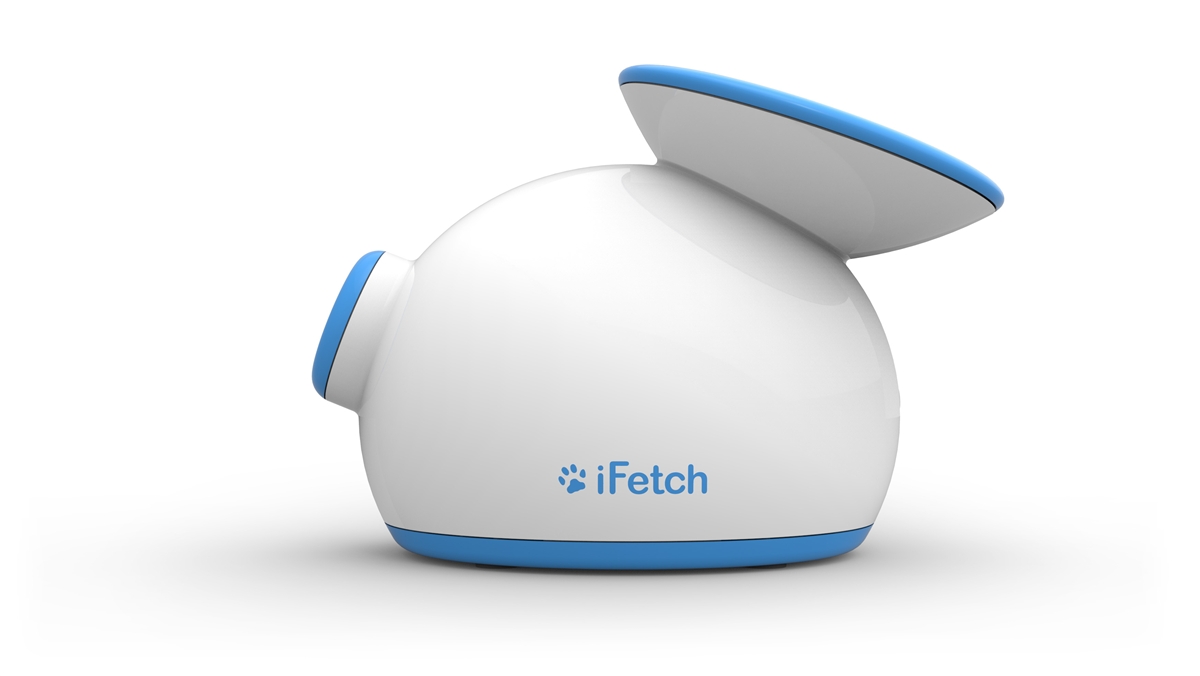
This new toy has gained popularity quickly, winning awards at pet trade shows and being scooped up by the public as soon as they become available. It’s just an automatic tennis ball launcher, but it has the added bonus that you can teach your dog to drop the ball in himself, thus making it a truly “self play” toy.
See it in action:
Pros
If you get tired of throwing that ball long before your dog is worn out, or maybe you don’t have the strength to throw a ball far, this is a great device.
For dogs that are left outside all day and dig, chew, etc., the iFetch may help with destructive boredom behaviors once your dog has been taught how to put the ball in the hole to continue the game.
Cons
Demand barking! My sheltie barks if you don’t throw that ball “fast enough.” We have worked very hard on him not getting something if he barks. But the iFetch doesn’t care, it spits the ball out whenever. So, your dog could get rewarded for demand barking.
“Something like the ifetch could also reward high arousal, out of control behavior,” adds Bennett. “For instance, if I’m playing fetch with my dog, I will ask him to sit before I throw the ball. That way, I’m reinforcing calm behavior (siting) before getting the dog revved up to go chase. This is especially important to teach impulse control to some dogs. So it’s possible that dogs that are too highly aroused could be trained to become more aroused if there are no control measures in place when using the toy.”
Go-Go Pal
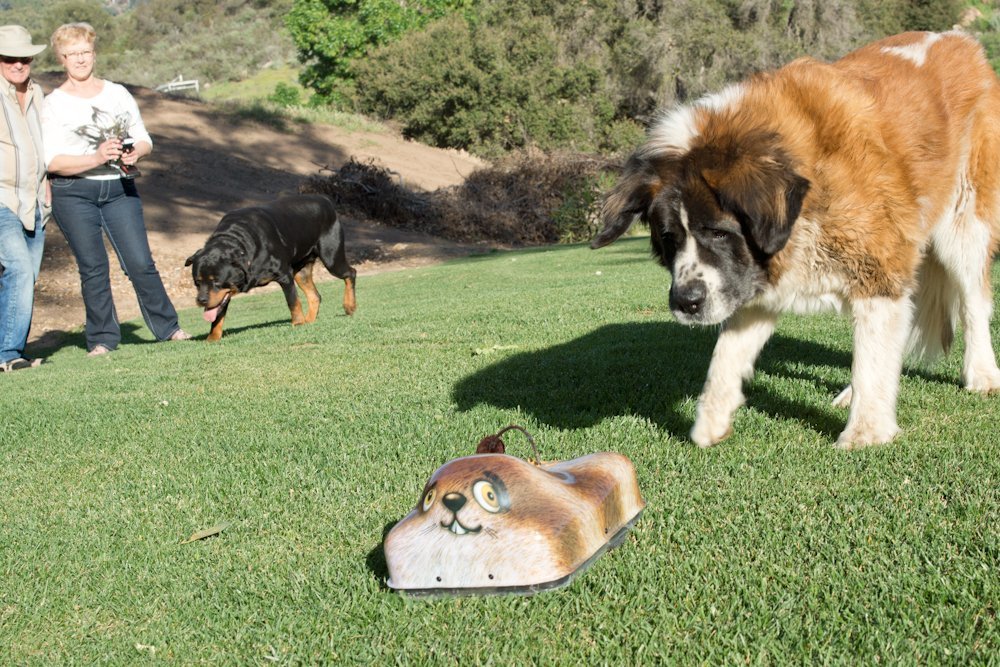
This toy is basically a remote control car that looks like a rodent instead of a car. It’s for chasing.
See it in action:
Pros
Since it’s remote controlled vehicle, you have to be involved. You can’t just leave your dog to play with himself.
It can be a great way to get a high energy dog tired without killing yourself in the process.
Can be a good training tool when used with a trainer and set rules.
Cons
It’s chasing. If you have a herding or hunting breed, reactive chasing can be something you have been working very hard to deter, not encourage. Dogs that chase cats, people, bikes, cars, birds, etc., should probably not use this toy UNLESS it’s with a trainer and you are using it to teach them not to chase.
“The one problem with this toy is that I can see it creating frustration especially with herding breeds,” adds Jennifer Jennifer Mauger CPDT-KSA, Certified Professional Dog Trainer and owner of L’Chaim Canine. “Playing with it as shown in the video the dog never gets to gain control or interact directly as with the ifetch. Simply put they need an ending. With this toy I would end a play session with either the dog ‘herding it’ into a space or place where game ends and toy goes away. For some dogs it might be necessary to end a session with a little fetch or tug of war.”
CleverPet
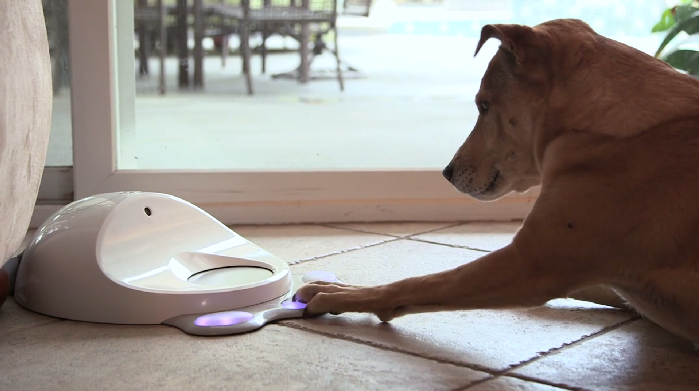
Not yet on the market, I personally see this one as the best of the group, with the exception of maybe the auto trainer, which has a very specific purpose (discussed below).
See it in action:
Pros
This is a self-play toy, but your dog only gets the treat if he does what the device “asks” him to do. If he is just sitting there and barking at, it’s not going to give your dog a treat. He needs to pay attention and hit the buttons.
It gets harder as your dog learns, keeping him engaged and making him use his brain.
Cons
As Bennett suggests above, a dog could become destructive if he tries to get the treats out without actually playing the game.
If your dog is exhibiting anxious or arousal behavior and just happens to hit the right button at the right time, he could still be rewarded for that behavior. However, I feel this is less likely with this toy than the ones mentioned above.
Manners Minder (Treat & Train)
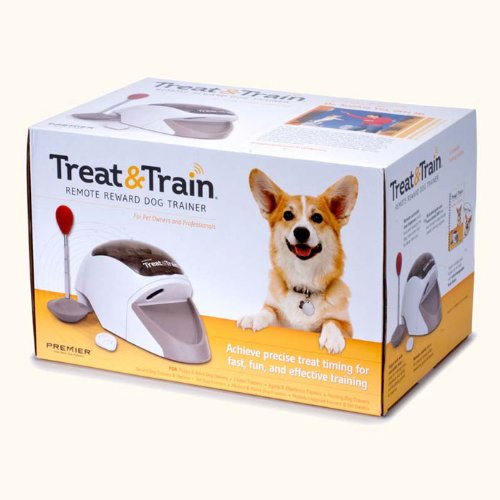
The Manners Minder (now called Treat & Train) has been around the longest in terms of the “auto feeder.” Basically, it’s a box that dispenses treats with the click of a button or at timed intervals.
Here is a video of Mauger working with her dog Tova using the Manners Minder:
Pros
This is Mauger’s favorite of the “tech toys.”
“I personally love the Treat and Train (Manners Minder),” she says. “The uses for training are endless. It is a tool I do recommend for some of my clients. It is very clear cut for any dog that is used to a marker. I have used it for everything from doorbell work, long stays, long distance target work, teaching send-outs, training for calm in the crate, car or mat too. I think it can be an invaluable tool for training.”
Cons
You have to be there if you are waiting for a particular behavior to happen before your dog is rewarded, like calmness or silence.
If you have it set to auto intervals, your dog could be rewarded for an undesired behavior.
This is the toy my dog barked and dug at trying to get the treats instead of paying attention to the training session.
Auto Trainer
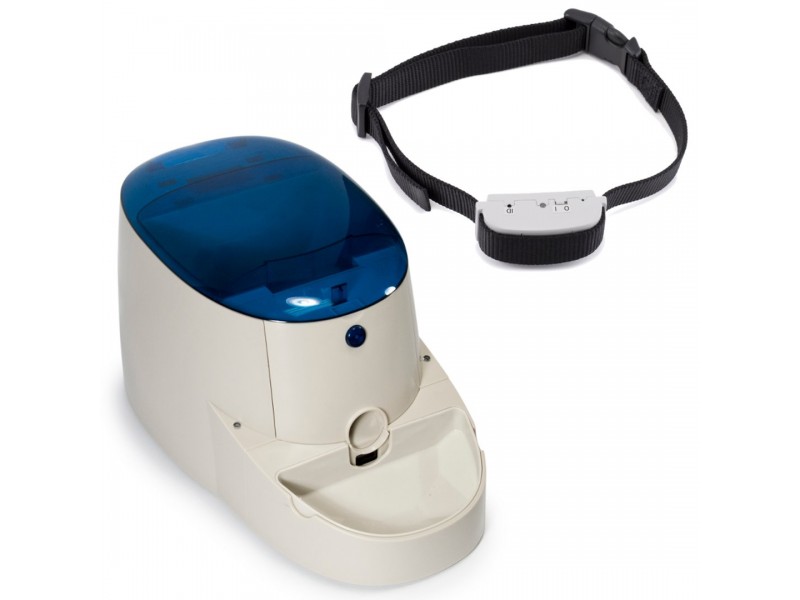
The Auto Trainer is the first positive reinforcement bark control device on the market. It rewards your dog for silence!
See it in action:
Pros
Unlike all the other items listed, with the exception of the manners minder if you are controlling it, this device will NOT give your dog a treat if he’s barking.
It’s a wonderful alternative to electronic or spray collars.
Cons
Won’t work if you have more than one dog, UNLESS one never ever barks and the other does, but that is not a common occurance.
You still have to fade the collar – your dog knows when it’s on and when it’s not, but since the reward is not giving from the collar, you will have an easier time than someone who is using corrective methods that are issued directly from the collar (spray or shock).
Tips to Using These Correctly
“When it comes to any automatic toy such as the go go dog pals or the ifetch you need to have rules in place starting play starts when I say go and ends when I say over,” explains Mauger. “I use these same rules for the flirt pole and tug of war as well.”
Here are her suggestions for the toys listed above, particularly the Go-Go Pal and iFetch:
- Toys need to be put away in-between play sessions.
- When it is time to play, only get the toy out when your dog is calm and relaxed.
- If he starts to show signs of excitement or arousal, toy gets put away again.
- I would work on sitting quietly at the very least before setting it out.
- When play is over the toy goes away.
About the Author
Based in Wilsonville, Ore., animal lover Kristina N. Lotz is a Certified Professional Dog Trainer – Knowledge Assessed (CPDT-KA) and a member of the Dog Writers Association of America. She is the founder of A Fairytail House. In her spare time, she trains and competes in a variety of performance events with her Shetland Sheepdogs and caters to her two rescue kitties. She smartly married a Veterinary Technician, who helps keep the fur kids happy and healthy, and provides a quick resource for articles.
 Toledo, United States.
Toledo, United States.